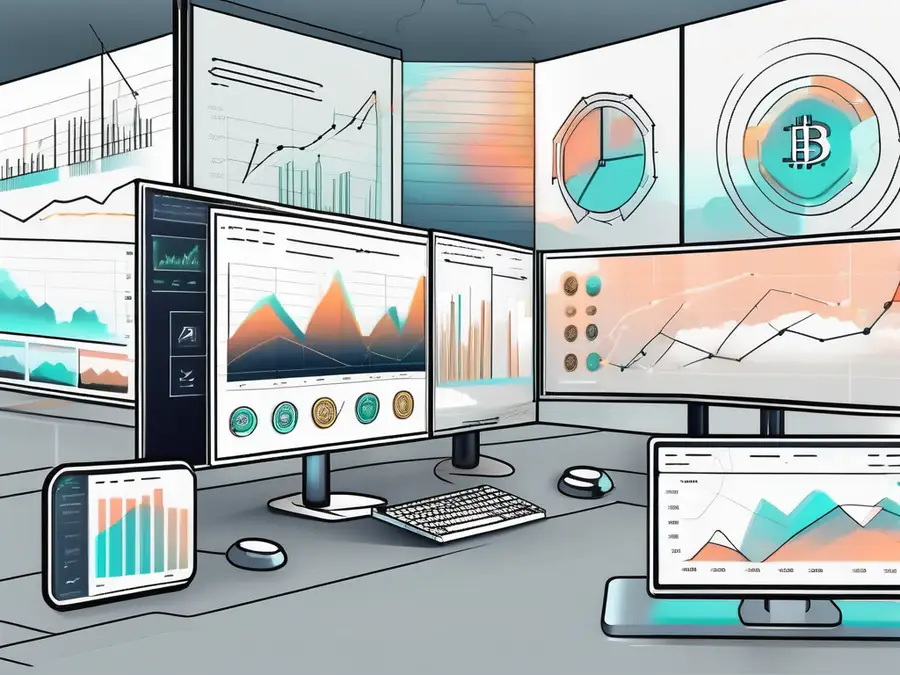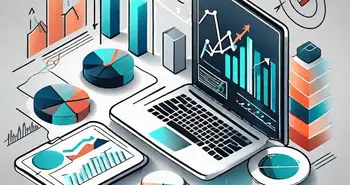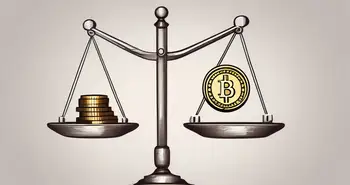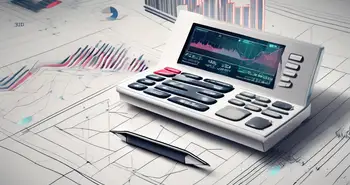An Introduction to Digital Asset Trading

Welcome to the ultimate guide to digital asset trading! In this comprehensive article, I will take you on a journey to understanding the world of digital assets, how to get started with trading them, the different types of assets you can trade, effective trading strategies, and essential risk management techniques. So, buckle up and let's dive right in!
Understanding Digital Asset Trading
What is Digital Asset Trading?
Digital asset trading refers to the act of buying and selling various types of digital assets, such as cryptocurrencies, digital securities, and utility tokens, on online trading platforms. It allows individuals to participate in the global digital economy and potentially generate substantial returns on their investments.
When engaging in digital asset trading, individuals have the opportunity to leverage cutting-edge technology and innovative trading strategies to navigate the dynamic and fast-paced digital asset markets. This can involve utilizing advanced trading tools, such as algorithmic trading bots and technical analysis indicators, to make informed trading decisions and capitalize on market trends.
The Importance of Digital Asset Trading
Digital asset trading offers several advantages over traditional financial markets. One of the key benefits is the potential for high liquidity. Unlike some conventional assets, digital assets can be bought and sold quickly, ensuring you have access to your funds whenever you need them.
Furthermore, digital asset trading provides an opportunity to diversify your investment portfolio beyond traditional asset classes. By investing in different types of digital assets, such as stablecoins, non-fungible tokens (NFTs), and decentralized finance (DeFi) tokens, investors can spread their risk across various sectors of the digital economy and potentially maximize their returns in a rapidly evolving market environment.
Types of Digital Assets
Cryptocurrencies
Cryptocurrencies, such as Bitcoin, Ethereum, and Litecoin, are the most well-known type of digital assets. They are decentralized digital currencies that use cryptography for secure transactions. Cryptocurrencies have gained significant popularity in recent years and have created new opportunities for investors around the world.
The concept of cryptocurrencies was first introduced by an individual or group of individuals known as Satoshi Nakamoto in a whitepaper published in 2008. Bitcoin, the first cryptocurrency, was created as a response to the 2008 financial crisis, with the aim of providing a decentralized alternative to traditional fiat currencies. Since then, thousands of cryptocurrencies have been developed, each with its own unique features and use cases.
Digital Securities
Digital securities, also known as security tokens, are digital representations of traditional financial securities, such as stocks, bonds, or real estate. These tokens are regulated and offer investors legal rights and ownership in the underlying asset. Digital securities provide an efficient and transparent way to trade traditional financial instruments.
The issuance of digital securities is governed by securities regulations in various jurisdictions, ensuring investor protection and compliance with financial laws. By tokenizing traditional assets, digital securities enable fractional ownership, increased liquidity, and automated compliance, revolutionizing the way financial assets are bought, sold, and traded.
Utility Tokens
Utility tokens are digital assets that are issued by companies or projects as a means of accessing their products or services. These tokens have a specific purpose within a particular ecosystem and are not designed to be an investment. Utility tokens are commonly used in blockchain-based projects and can offer unique value to their holders.
Utility tokens are often used to access a platform's features, pay for services, or participate in a decentralized governance model. They play a crucial role in incentivizing user participation and driving network effects within blockchain ecosystems. While utility tokens do not represent ownership in a company, they can provide utility and value to users by granting access to specialized services or functionalities.
Getting Started with Digital Asset Trading
Setting Up a Digital Wallet
Before you start trading digital assets, you'll need to set up a digital wallet to securely store your assets. A digital wallet is a software application that allows you to manage and store your digital assets. Choose a reputable wallet provider and follow their instructions to create your wallet.
When setting up your digital wallet, it's essential to prioritize security. Look for wallets that offer features like two-factor authentication, encryption, and cold storage options to safeguard your assets from potential cyber threats. Additionally, consider the convenience and accessibility of the wallet, as you'll want a solution that allows for easy transactions and management of your digital assets.
Choosing a Trading Platform
Once you have a digital wallet, you'll need to choose a trading platform to execute your trades. It's crucial to select a platform that offers robust security measures, reliable customer support, and a user-friendly interface. Do thorough research and consider factors such as fees, supported assets, and trading tools before making your decision.
When evaluating trading platforms, take into account the platform's reputation within the digital asset community. Look for platforms that have a history of secure and efficient trading, as well as positive feedback from users. Additionally, consider the platform's liquidity, as higher liquidity can lead to faster trade execution and better price stability for your transactions.
Trading Strategies for Digital Assets
Fundamental Analysis
Fundamental analysis involves evaluating the intrinsic value of a digital asset by examining factors such as project team, technology, market demand, and potential adoption. This strategy aims to identify undervalued assets and make informed investment decisions based on their long-term potential.
When conducting fundamental analysis, investors delve deep into the project team's expertise and experience to assess their ability to deliver on the project's promises. They also scrutinize the underlying technology of the digital asset, looking at its scalability, security features, and potential for real-world applications. Market demand is another crucial factor, as understanding the target audience and their needs can provide insights into the asset's growth potential. Lastly, evaluating the potential adoption of the digital asset involves analyzing partnerships, community support, and regulatory environment to gauge its future success.
Technical Analysis
Technical analysis focuses on analyzing historical price data and patterns to predict future price movements. Traders using this strategy rely on indicators, charts, and other tools to identify trends and entry/exit points. Technical analysis can help you make short-term trading decisions based on market sentiment and price action.
Traders employing technical analysis often use a variety of indicators such as moving averages, relative strength index (RSI), and Bollinger Bands to identify potential entry and exit points. Chart patterns like head and shoulders, double tops/bottoms, and triangles are also commonly used to predict future price movements. By studying these patterns and indicators, traders can gain insights into market sentiment and make informed decisions on when to buy or sell digital assets. It is essential to combine technical analysis with risk management strategies to maximize profits and minimize losses in the volatile digital asset market.
Risk Management in Digital Asset Trading
Understanding Volatility
Digital asset markets are known for their volatility, which refers to the rapid and significant price fluctuations. It's essential to understand and manage this risk effectively. Consider using stop-loss orders to limit potential losses and diversify your portfolio across different asset types to mitigate overall market risk.
Diversification Strategies
One of the key principles of risk management in digital asset trading is diversification. By spreading your investments across multiple assets, industries, and geographies, you can reduce the impact of a single asset's poor performance on your overall portfolio. Diversification allows you to capitalize on diverse opportunities and minimize potential risks.
Now that you have a solid understanding of digital asset trading, it's time to put your knowledge into action! Remember, practice makes perfect, so start with small investments and gradually increase your exposure as you gain confidence and experience in the market.
As an expert in digital asset trading, I've seen firsthand how this booming industry can offer incredible opportunities. I personally started trading cryptocurrencies a few years ago and have since expanded my portfolio to include various digital securities and utility tokens. It has been a thrilling journey filled with excitement and learning opportunities.
FAQ
What is digital asset trading?
Digital asset trading refers to buying and selling various types of digital assets, such as cryptocurrencies, digital securities, and utility tokens, on online trading platforms.
Why is diversification important in digital asset trading?
Diversification helps reduce your overall risk by spreading your investments across different asset types. It allows you to capitalize on various opportunities while minimizing potential losses from a single asset's poor performance.
What are some essential risk management techniques in digital asset trading?
Some risk management techniques include using stop-loss orders to limit potential losses, diversifying your portfolio, and understanding the volatility of digital asset markets.
Why is fundamental analysis important in digital asset trading?
Fundamental analysis helps evaluate the intrinsic value of digital assets by examining various factors, such as the project team, technology, and market demand. It enables informed investment decisions based on long-term potential.
Now armed with this comprehensive guide, you are well-equipped to venture into the exciting world of digital asset trading. Remember to stay updated with the latest industry trends, continuously educate yourself, and always approach trading with a disciplined mindset. Happy trading!
Ready to elevate your digital asset trading experience? Join Morpher today and immerse yourself in a revolutionary trading platform that harnesses the power of blockchain technology. With Morpher, you can trade a vast array of assets, from cryptocurrencies to stocks, forex, and even unique markets like NFTs, watches, and sneakers, all with zero fees and infinite liquidity. Start with as little as $1, take advantage of up to 10x leverage, and enjoy the safety of a non-custodial wallet. Don't miss out on this innovative and user-centric trading journey. Sign Up and Get Your Free Sign Up Bonus now to begin trading the Morpher way!

Disclaimer: All investments involve risk, and the past performance of a security, industry, sector, market, financial product, trading strategy, or individual’s trading does not guarantee future results or returns. Investors are fully responsible for any investment decisions they make. Such decisions should be based solely on an evaluation of their financial circumstances, investment objectives, risk tolerance, and liquidity needs. This post does not constitute investment advice.

Painless trading for everyone
Hundreds of markets all in one place - Apple, Bitcoin, Gold, Watches, NFTs, Sneakers and so much more.

Painless trading for everyone
Hundreds of markets all in one place - Apple, Bitcoin, Gold, Watches, NFTs, Sneakers and so much more.









